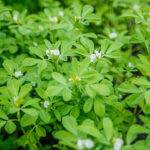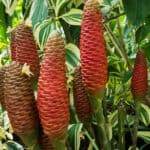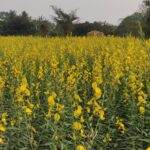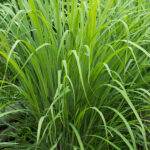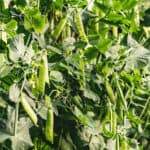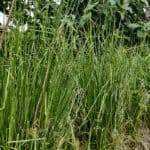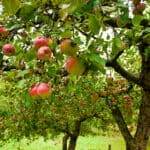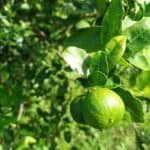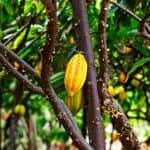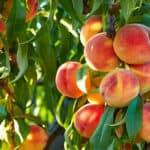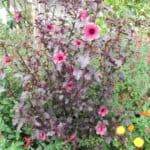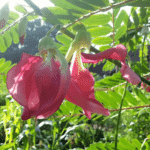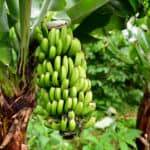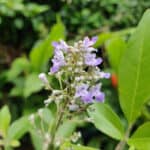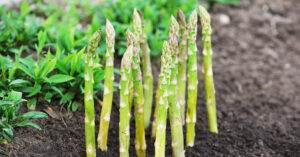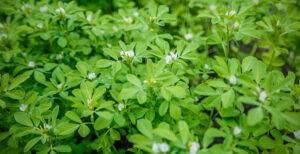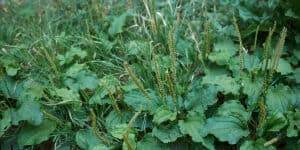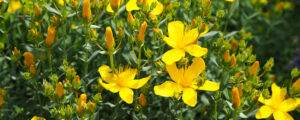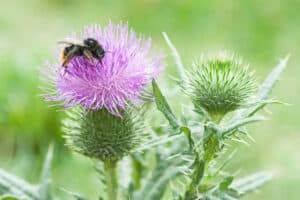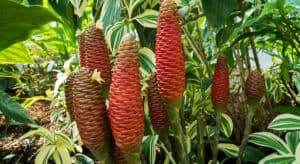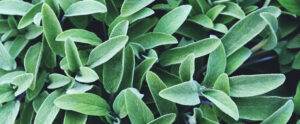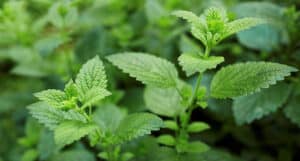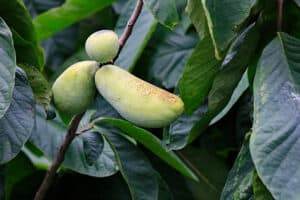Also known as starfruit or five finger, carambola is a woody perennial tree with an upright, rounded, and somewhat weeping growth habit. It is native to Malaysia or Indonesia and was spread worldwide throughout tropical and subtropical regions by Portuguese explorers.
Carambola is called starfruit due to its 5-winged shape and the star-like appearance when sliced in cross sections. It has a very juicy and succulent, crisp texture with a mild floral flavor that ranges from tart and very acidic to sweet-tart or with milder acidity levels.
Trees can be up to forty feet tall and usually become heavy fruiters when mature, with up to four crops a year. Fruits have a substantial number of vitamins, minerals, and oxalic acid. Oxalic acid is also present in spinach, rhubarb, and when eaten in excess can cause health complications in individuals with gout, kidney issues, or other medical ailments. This, however, should not be a deterrent when growing and eating carambola. It is a beautiful tree with many uses that is appreciated by humans of all ages and ethnicities, wildlife, pollinators, and livestock.
A close relative in the same genus of Averrhoa is Bilimbi which is a very tart fruit with less pronounced ridges and a similar growth habit that thrives strictly in tropical environments.
Propagation & Planting
Starfruit is grown from seed. Preferably selected and improved varieties are grafted onto seedling plants. Seedling carambola is not true-to-seed and can take may years to produce variable fruit that is usually tart, small, and of inferior quality. Recommended grafting methods include cleft, saddle, and chip or t-bud. Seedlings can be grafted in place when already planted with one variety or more than one to create a cocktail plant for optimal fruit production.
Trees should be planted in the ground when established, usually after six months old when seedlings are selected and after 1 year old for grafted plants.
Seeds can be started in moist but well drained, neutral to slightly acidic soil. Seeds should not be allowed to desiccate between collection and planting and will lose viability when allowed to dry. Popular grafted varieties include Arkin, Kary (sometimes incorrectly spelled Kari, Cary, or Cari), Sri Kembangan, Bell, and Fwang Tung with many other named varieties from Indonesia, Australia, Taiwan, Malaysia, Hawaii, and South Florida that are not commonly sold or propagated commercially in the United States.
Plant starfruit in full sun to full shade but note that starfruit trees grown in full shade may produce fewer flowers and less fruit.
Does your starfruit flower but only set a few fruits? This is because certain varieties of starfruit are self-fertile with longer flower styles than stamina parts while other varieties have shorter flower styles and longer stamina and are not compatible with self-fertilization. Short style varieties will require a cross pollinator for optimal fruit set. The flower part differences can be observed with a hand magnifying lens.
Growth & Care
Starfruit plants appreciate rich, well-drained soil that is kept moist, especially during flowering and fruiting. Nutritional deficiencies are common in basic soils with low pH or low organic matter content.
Do NOT overwater during a chance of frost or freeze as this can damage the plant and make it especially susceptible to cold damage. The leaves of the starfruit can be watered during times of drought however plants should not be routinely watered overhead to reduce the chance of leaf-borne pathogens. Care should be taken with overhead watering during flowering to not cause damage or disease to budding flowers and developing fruit.
Established plants can tolerate much cooler temperatures than young plants and young plants should be protected from frosts and sheltered from hard freezes.
Starfruit is not particularly sensitive to treated, chlorinated water however damage or nutritional deficiency is still possible depending on the frequency and type of watering, pH, and concentration of chlorine and other water treatment solutions found in municipal water.
Insect pests are generally not an issue in healthy plants but can include ants, aphids, thrips, scale, and root weevils. The most common pests are mammals and birds, including squirrels, racoons, rats and mice, and uninvited humans.
Do not over fertilize! Most carambola plants will do fine by themselves in nutrient or compost-rich soil or with light fertilizer spaced evenly throughout the growing season with a treatment including micronutrients. Overfertilization with nitrogen will lead to increased foliar growth and decrease in flowers and fruit set.
Starfruit trees are fast growers when established and should be pruned to lift and maintain the canopy shape, prevent overgrowth, and optimize the ability to reach fruit as it ripens. Mature limbs are prone to die-back and should be routinely removed to increase airflow, and decrease old, dead wood that harbors pests and pathogens, hinders ability to pick fruit, and can potentially damage or puncture developing fruit.
The primary growth seasons are during spring, summer, and tapers off into fall. The trees are evergreen however some leaf loss may occur during extreme drops in temperature or if any direct cold damage occurs.
Harvesting
Fresh carambola can be harvested as soon as the fruit is full size and begins to lighten from vibrant green color. Sweetness increases as the fruit blushes more color and depending on the variety, the fruit can even become a yellowish orange when at the peak of its sweetness. One or two varieties will remain a pale green when ripe and lighten to pale yellowish beige when fully tree ripened.
Care should be taken when picking as the skin is somewhat waxy but thin and the fruit will become easily damaged when scraped, poked, or dropped. They are not well suited to shipping because of how tender ripe fruit is. Unripe fruit that picked green can be shipped; however the flavor will never fully develop or sweeten, although the fruit may still change to a more desirable color. Seeds are edible and non-toxic.
Fruit should not be picked mechanically and must be picked by hand or by hand with a picker pole that has a basket attached to the end. If a picker pole with a basket is used, it is recommended to place padding in the basket to ensure the fruit does not become damaged when it falls into the basket.
Flowers and fruit will develop directly from the branches of starfruit trees which is a growth habit called cauliflory. Cauliflorous fruits will often ripen in what appears to be a cluster.
Due to the clustered nature of fruit on the tree, picking poles might cause fruit to fall outside of the basket and become damaged by falling to the ground if extreme care is not taken.
The mauve, lavender, or pink flowers are also edible and can be used in salads or as a garnish for other foods. The flowers have a very mild sweet-tart flavor reminiscent of the flavor of carambola fruit. Harvesting only the petals should be done by hand only and does not interfere with fruit set.
Processing & Utilizing
Carambola can be eaten fresh by cutting into slices or biting directly into the fruit. Some people prefer to cut off the brown or green ribs to decrease tartness or bitterness, especially in under ripe or overripe fruit. Fresh carambola can be baked in pies, breads, or cakes. Due to the high moisture content of the fruit, it is also ideal for juicing. Because of its sweet and somewhat neutral yet acidic flavor, it can be used like apples in cooking savory dishes including preparations with seafood, meats, or vegetables, and as a component in sauces. To preserve carambola, it may be sliced and dehydrated in slices, made into a jam or jelly, or canned as fruit chunks, slices, or with other fruits as part of a fruit cocktail. Chutneys, relishes, and pickles are also an option, and carambola can also be used to make wine or vinegar.
Due to the high oxalic acid content of the fruit, it can also be used as furniture, jewelry, or metal polish. It is especially helpful on brass and with any type of rust stains. Have you heard of cleaning products that have the name oxy- in them? Contrary to popular belief this usually stands for oxalic acid instead of oxygen! If starfruit is used for cleaning, be sure to account for the sugar content of the fruit which can make more of a mess than being helpful with cleaning! Green fruit is better for cleaning purposes than ripe fruit which is usually full of sugar.
Lastly, starfruit may be used to fix dye to cloth or intensify colors of dye.








